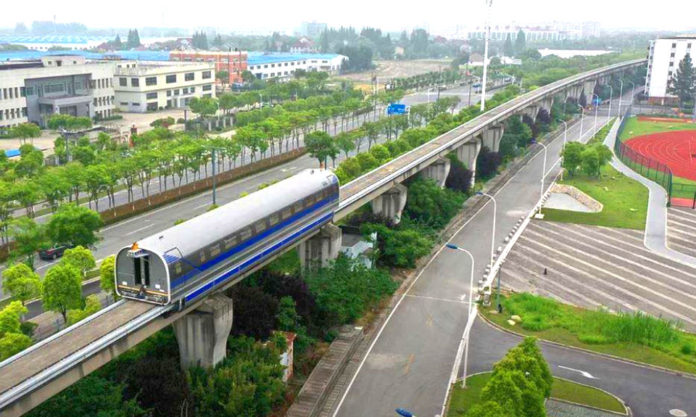Tests performed recently in Shanghai are helping to show that China will independently build and operate ultra-high-speed trains long before any other country, as an electromagnetic levitation vehicle potentially capable of 600 km/h made its first moves.
Tonji University’s Jiading Campus in Shanghai was the venue for the test on 21 June, on the purpose-built 1.5 km maglev track. Travelling nowhere near 600 km/h, the ultra-high-speed train test was more about proving that the vehicle meets deign and performance specifications.
More than 200 test items were conducted, including those relating to suspension guidance, speed measurement, vehicle-track coupling, traction and vehicle-ground communication, reported JFDaily.
Until now, China has been heavily reliant on western technology for its maglev ambitions. The famed Shanghai Transrapid to Pudong airport that commenced operations in 2004 was built by a joint venture between German behemoths Siemens and ThyssenKrupp.
- Automated High-Speed Train to Take us to Great Wall of China!
- Trains and Railways to the Rescue in Fight Against Covid-19
- Countdown to Winter Olympics as 8 New High-Speed Lines Open
More recently, two maglev vehicles were just last month delivered by air to Chengdu where they will be used on an urban rail link as a test alternative to trams or metro trains. The maglev units were built by Max Bögl, another German constructor, reported Railway Gazette.
While the maglev tested at Tonji is entirely Chinese made, foreign experts, largely from universities in Germany, have been involved. Moreover, last month’s test has also brought back to the table plans for levitated trains travelling much further then the Transrapid.
After the opening of the link to Pudong, there was much speculation that China may attempt building an ultra-high-speed train line between Shanghai and Beijing. Regarded as overly ambitious, a link between Shanghai and Hangzhou was voiced as a more achievable alternative.
That China may now complete such a project without relying on foreign technology has brought about fresh impetus for a 175 km track between the Longyang Lu terminus of the Shanghai Transrapid and the capital of Zhejiang province. It is estimated that the journey would take a mere 20 minutes.
- Nanjing Home to World’s Fastest Train (and Second Fastest, btw!)
- “The Hulk” Debuts in Nanjing; Salaries Cut Over Train Failures
- “Ghost Stations”; Nanjing’s Forgotten High-Speed Rail Stops
Yet, with energy consumption per seat kilometre just one third that of aircraft, experts believe ultra-high-speed trains only justify their existence on journeys of 1,000 kilometres or more.
The test vehicle hovering in Tonji is the first of five that will form a complete train as an engineering prototype which China wants to see in commercial operation by 2025.
Cynics and realists alike may prefer to take such a projection with a pinch of salt. The Tonji test comes almost 2 years late; The Nanjinger reported in January of 2018 that a prototype train would be rolled out by that year end.
The ultra-high-speed train is being built by the Qingdao Sifang division of CRRC that is the world’s largest rolling stock manufacturer in terms of revenue.









